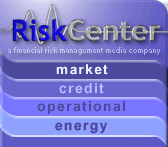Location: London
Author: David Lyon
Date: Tuesday, January 15, 2008
A new study launched yesterday by Arthur D. Little explores the impacts of
the climate change agenda on business strategy and future competitiveness.
Facing the carbon challenge head-on is a critical success factor behind
leading businesses in all sectors and regions of the world. This report
looks at how leading businesses are delivering sustainable growth and
improving brand equity through a dual approach to addressing carbon
emissions and climate change in general.
Correct positioning is key to an impactful and profitable carbon strategy –
but how do decision-makers balance technological innovations with
customer-based solutions, as well as balancing regulatory compliance with
voluntary efforts? Arthur D. Little’s latest study, “The Carbon Margin,”
examines and articulates how businesses across all sectors can view carbon
regulation and the surrounding debate as an opportunity to develop new
profit streams and gain competitive advantage.
"Our research has shown that while all businesses must adhere to the legal
carbon emissions regulations, the leading companies, regardless of sector,
are not simply reacting to the carbon problem, but developing sustainable
business models that address climate change in a way that is appropriate to
their industry and customers,” reflects David Lyon, a leader of Arthur D.
Little’s Global Carbon Advisory Service. “With climate change the decided
issue du jour, businesses must not simply go through the motions and take a
cookie-cutter approach to reducing carbon. In reality, carbon exposure
presents specific, and often very different, risks and opportunities for
each major industry sector.”
Companies are increasingly developing sophisticated carbon strategies or
investing in energy-saving or carbon-cutting technology. However, in many
cases, investing in technology or addressing carbon emissions is not enough
to remain competitive. In “The Carbon Margin,” Arthur D. Little outlines how
businesses that take a holistic approach to their carbon strategies are
identifying new revenue streams, saving millions on current operational
costs and building strong brand equity and competitive advantage.
Striking the right balance between technological innovations, market-based
carbon responses and regulatory compliance is complex and does not offer a
tailor-made solution or model of best practice.

To subscribe or visit go to: http://www.riskcenter.com